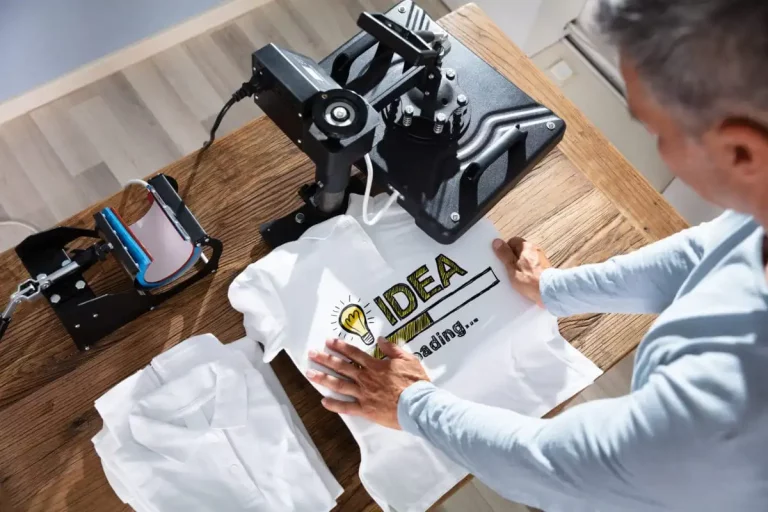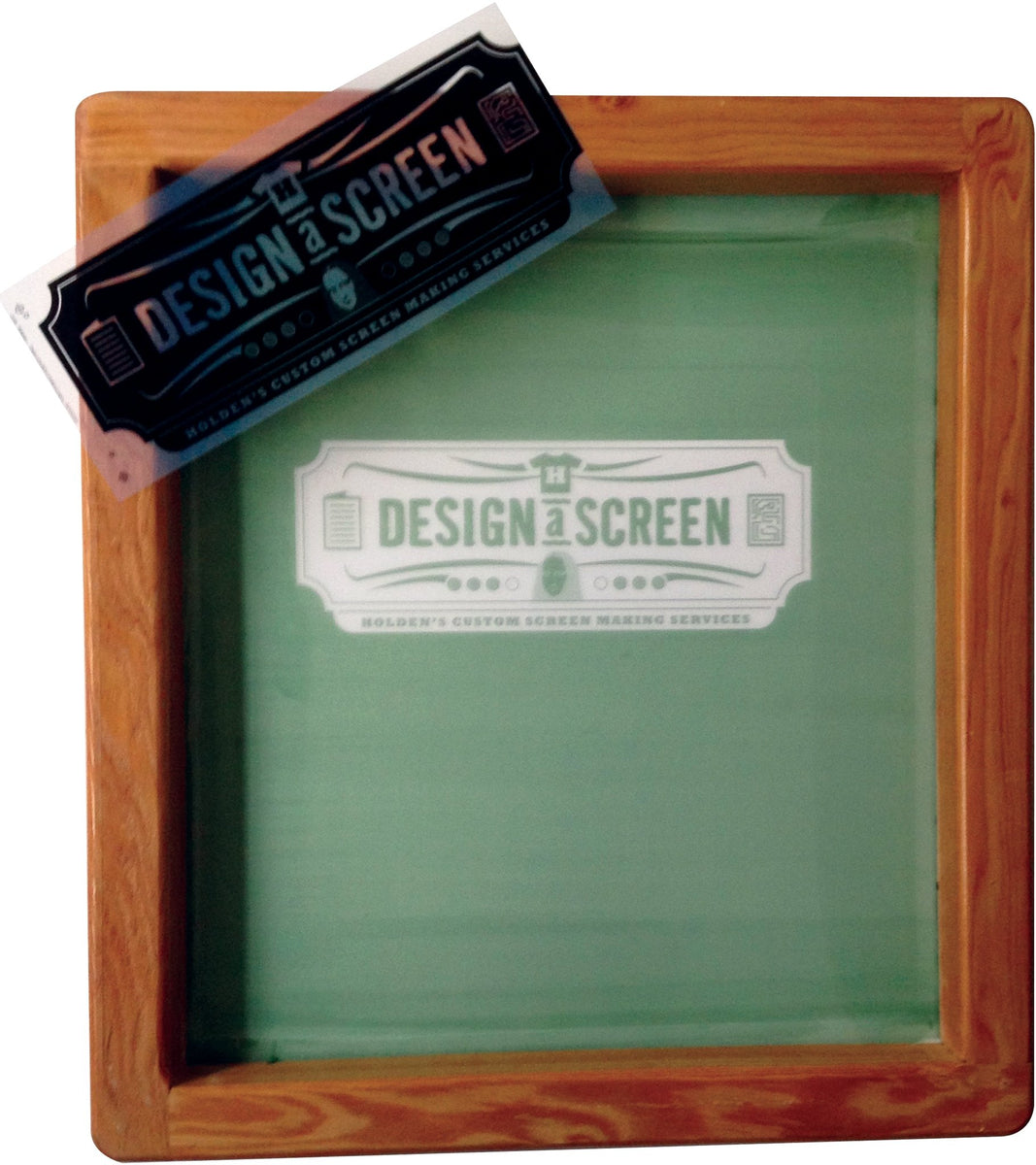Fast Turnaround Custom Screen Printing for Events
Wiki Article
Screen Printing Uncovered: Whatever You Required to Learn About Tee Shirt and Garment Printing Strategies
If you've ever asked yourself how those dynamic designs wind up on your favored tees, you remain in the right location. Display printing is a remarkable technique that incorporates art with strategy, supplying countless possibilities for creativity. Comprehending the principles, from tools to ink choices, can significantly influence your outcomes. Ready to discover the necessary aspects that make display printing an art form? Allow's reveal the information that can boost your jobs.
The Fundamentals of Screen Printing: Exactly How It Functions
When you plunge into screen printing, you'll find it's both an art and a scientific research. At its core, display printing entails producing a pattern, or display, that permits ink to go through just in particular locations (screen printing kit). You begin by choosing your design and preparing your screen with a light-sensitive solution. Once you expose this solution to light, it sets, leaving your design as an adverse room.Next, you'll mix your inks and prepare your printing surface area. Position the display over the material, then use a squeegee to push ink with the screen onto the garment. This procedure requires precision, as you desire clear, vibrant prints. After printing, you'll treat the ink with heat, guaranteeing it complies with the fabric and lasts via cleans. Each action is vital, and grasping them will certainly elevate your screen printing skills, changing straightforward garments into unique, expressive pieces.
Kinds of Display Printing Methods
Once you realize the basics of display printing, it's time to discover the numerous methods that can raise your designs. One prominent approach is traditional screen printing, where ink is pushed through a stenciled screen.An additional option is plastisol printing, recognized for its durability and vibrant shades, making it a preferred for many brand names. Experiment with halftone printing to develop slope effects and intricate styles.
Important Equipment for Display Printing
To attain sensational outcomes in display printing, having the appropriate tools is basic. You'll need a sturdy screen printing frame, which holds the mesh that moves your design onto the garment. Next, invest in top notch mops; these are vital for using ink uniformly throughout the screen.Choosing the Right Inks and Materials
When picking inks and materials for screen printing, you need to take into consideration the kind of ink that functions best for your project. Consider fabric compatibility to ensure your layouts look excellent and last long. Check out environment-friendly ink alternatives to make your printing procedure more sustainable.Sorts Of Screen Inks
Choosing the ideal display ink is essential for accomplishing vivid, resilient prints that meet your job's requirements. There are numerous kinds of display inks to analyze. Specialty inks, such as metal or glow-in-the-dark, can include unique results to your designs.
Textile Compatibility Factors To Consider
Comprehending fabric compatibility is vital for attaining top quality display prints, particularly since different products react distinctly to different inks. Always test your inks on example textile to ensure they stick correctly and keep color honesty. Additionally, maintain in mind that fabric weight and structure can impact the last end result, so choosing the right ink and product combo is essential for your job's success.Eco-Friendly Ink Options
Environment-friendly inks are becoming a preferred selection for display printers that desire to minimize their environmental effect while keeping quality. When choosing inks, take into consideration water-based inks, which are much less harmful and simpler to clean up compared to standard solvents.In addition, look for inks made from renewable resources, such as soy or vegetable-based options. By picking the best inks and products, you'll not only produce spectacular styles but additionally add to a more sustainable printing process. Make the switch, and your prints will certainly show your commitment to the atmosphere!
Preparing Your Design for Screen Printing

File Format Needs
To guarantee your style looks dynamic and sharp on fabric, you'll require to pay close attention to file layout requirements for screen printing. Beginning with vector files like AI or EPS, as they can be scaled without shedding quality. If you utilize raster pictures, select high-resolution data, such as TIFF or PNG, preferably at 300 DPI. Avoid using JPEGs, as they can shed quality when resized. Make certain your design has a transparent background to protect against unwanted white edges on your prints. Keep color settings in mind; CMYK is common for display printing, so transform your RGB makes accordingly - screen printing kit. By adhering to these standards, you'll set your artwork up for a successful print.Shade Splitting Up Strategies
Shade separation is an essential step in preparing your style for screen printing, and understanding it can substantially improve your print high quality. You'll require to break your layout into individual colors, as each color needs a different screen throughout printing. This precision not just assures precise shade representation yet also improves the printing procedure.Resolution and Size
Accomplishing the best results in display printing starts with ensuring your layout has the best resolution and dimension. Preferably, your artwork must go to the very least 300 DPI (dots per inch) for sharp, clear prints. Your final item could look less than professional and pixelated. if you use reduced resolution.When it comes to size, take into consideration the dimensions of your print location. Layout your artwork to match the final print size, preferably developing it in the actual dimensions you'll be printing. This means, you'll prevent any kind of unforeseen scaling concerns.
Always check your style in both vector and raster styles. Vector graphics can be scaled without shedding quality, making them excellent for screen printing. Preparing properly will ensure your style looks impressive on every garment!
Step-by-Step Display Printing Refine
Screen printing is a dynamic process that allows you to create lively styles on different surface areas. To begin, you'll need a screen, emulsion, and your selected ink. Prepare your screen by cleaning it thoroughly. Next, apply the solution evenly and let it dry in a dark location. As soon as completely dry, subject your screen to light with your design positioned on it, which will certainly solidify the emulsion where the light hits, developing a stencil - screen printing kit.Pour ink onto the display and utilize a squeegee to push the ink via the pattern onto the textile. Lift the screen carefully and allow the print completely dry. You have actually effectively display published your layout.
Tips for Effective Display Printing Projects
While you're diving into your display printing projects, keep in mind that prep work is crucial to success. Start by collecting all your materials-- inks, displays, garments, and squeegees. A tidy office helps protect against undesirable mistakes, so neat up prior to you begin.Following, verify your artwork is high-resolution and appropriately sized for your garment. Check your screen for appropriate direct exposure and tidy it completely to stay clear of smudges. When blending your inks, follow the supplier's guidelines to accomplish the ideal uniformity.
During printing, apply even screen printing kit stress with your squeegee for regular results. Do not hurry; take your time to verify each print fulfills your requirements. After printing, let your garments completely dry completely before taking care of or packaging them.
Finally, always keep an example of your job for future reference. In this manner, you can assess your development and boost your techniques gradually. Delighted printing!

Often Asked Concerns
How much time Does It Take to Establish a Display Printing Work?
Establishing up a display printing task normally takes around half an hour to an hour. You'll prepare the displays, mix inks, and change the press. The time varies based upon complexity and experience, so stay organized!Can I Publish on Various Textile Keys In Making Use Of the Exact Same Method?
Yes, you can print on various textile kinds making use of the very same method, however you'll need to adjust your setups and inks. Some materials absorb ink in different ways, so experimenting guarantees the best outcomes for every product.What Prevail Blunders to Stay Clear Of in Screen Printing?
When display printing, prevent common blunders like utilizing the wrong ink, ignoring proper direct exposure times, or avoiding pre-press checks. Always evaluate your setup and preserve tidy screens to ensure quality results each time.Exactly How Can I Correctly Tidy and Preserve My Display Printing Tools?
To correctly tidy and preserve your display printing devices, you should frequently clean screens with appropriate solvents, inspect squeegees for wear, and ensure all tools are stored dust-free and completely dry. Consistency prevents expensive repairs and boosts efficiency.Is Screen Printing Eco-friendly Contrasted to Other Methods?
Screen printing can be more environmentally friendly than other techniques, especially if you utilize eco-conscious products and water-based inks. By selecting sustainable materials and techniques, you reduce waste and lessen your effect on the planet.Screen Printing Uncovered: Whatever You Required to Know Concerning T-Shirt and Garment Printing Techniques
At its core, screen printing involves creating a pattern, or display, that permits ink to pass via only in particular areas. Placement the screen over the material, then make use of a squeegee to push ink through the display onto the garment. One prominent method is traditional screen printing, where ink is pushed through a stenciled screen.When choosing inks and materials for screen printing, you need to take right into account the kind of ink that functions ideal for your job.
Report this wiki page